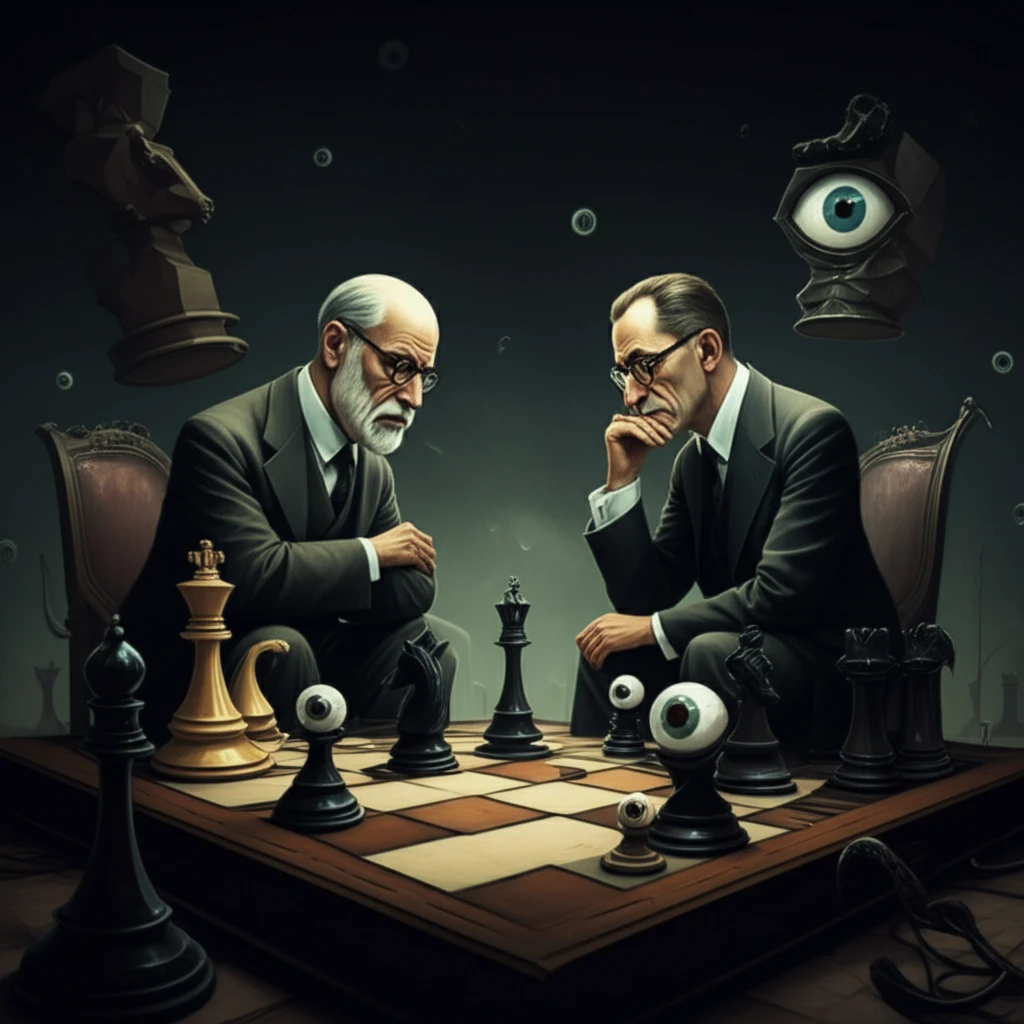
Freud vs. Lacan: Unraveling the Complexities of Perversion in Modern Psychology
"Explore how Freud's early theories of sexuality and perversion contrast with Lacan's structural approach, influencing contemporary views on sexual identity and psychoanalysis."
Psychoanalysis, since its inception, has faced criticism for its perceived 'normalizing' and 'conservative' stance, particularly concerning sexuality. Feminist scholars and queer theorists have challenged what they term the 'heteronormative' assumptions embedded within psychoanalytic metapsychology. Central to these discussions is the concept of sexual perversions, a topic that Freud initially brought to the forefront.
Freud's early work sought to integrate perversions into the psychoanalytic framework, viewing them through the lens of hysteria research. Subsequently, each psychoanalytic theorist has grappled with the 'problems' presented by these conditions. But is it truly appropriate to label these conditions as 'pathologies'? Are there individuals who can be diagnosed? This debate brings up important questions about what it means to have a desire, what is considered law, and ultimately the essence of sexuality.
This article aims to dissect the contrasting views of Freud and Lacan on perversion. We will explore the original paradigm presented in Freud's 'Three Essays on Sexuality,' which differs significantly from later psychoanalytic interpretations, particularly Lacan's structural approach. By contrasting these perspectives, we hope to shed light on the ongoing debates surrounding sexual ethics, identity, and the evolving landscape of psychoanalytic theory.
The Divergent Views: Freud's Polymorphous Perversity vs. Lacan's Structural Framework

Freud's 'Three Essays,' particularly the initial 1905 edition, offers a groundbreaking analysis of perversions, drawing from the work of Krafft-Ebing but diverging significantly in its conclusions. Krafft-Ebing distinguished between 'perversities,' seen as abnormal behaviors of sound-minded individuals, and 'perversion,' a disease affecting the personality. Freud, however, challenges the notion that perversion is inherently linked to non-procreative sex.
- Autoeroticism: Infantile sexuality is radically autoerotic, where the object serves merely to stimulate an erogenous zone.
- Rejection of Hierarchy: Freud implicitly questions any inherent hierarchy between erogenous zones, challenging traditional views.
- Critique of Teleology: Freud initially rejects the teleological view that the purpose of sexuality is procreation.
The Enduring Relevance of the Debate
The debate between Freud and Lacan on perversion remains relevant today, informing discussions on sexual diversity, gender identity, and the role of psychoanalysis in understanding the complexities of human desire. While Freud's early work emphasized the polymorphous and pleasure-seeking nature of infantile sexuality, Lacan's structural approach highlighted the role of the symbolic order and the law of the father in shaping perverse structures. By understanding these contrasting perspectives, we can gain a deeper appreciation of the ongoing evolution of psychoanalytic theory and its implications for contemporary society.
